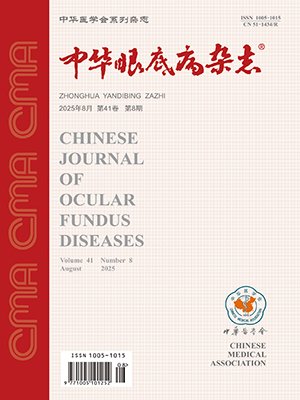Objective To observe the clinical effects and safety of Bevacizumab on recurrent idiopathic choroidal neoascularization(CNV). Methods To analyze retrospectively the clinical data of 21 eyes of 20 patients with recurrent idiopathic CNV who had intravitreal injection of Bevacizumab(0.05 ml 1.25 mg) after signing the letter of consent. In these patients, 12 cases (13 eyes) had been cured by photodynamic therapy (PDT), and 8 cases (8 eyes) had been cured by transpupillary thermotherapy (TTT). The follow-up periods were 2 weeks, 1 month, 3 months and 6 months after injection. The inspection findings of best-corrected visual acuity(BCVA), fundus fluorescein angiography (FFA) and optical coherence tomogr aphy (OCT) before and after the treatment were observed and analyzed. It could inject once more by the same way if there are recurrences in follow-up period. Results At the end of follow-up period, the BCVA improved obviously ( gt;1 lines) in 14 eyes (66.7%),kept stable (changed within 1 line)in 5 eyes (23.8%) and decreased ( gt;1 lines) in 2 eyes(9.5%). The complete closure of CNV in 17 eyes (81.0%) and partial closure in 4 eyes (19.0%) were observed by FFA images. The thickness of retina in macular region decreased 115 micron. 3 eyes (14.3%) has inject again during follow-up period. The intraocular pressure increased in 4 eyes(19.0%) , the average intraocular pressure was 26.7 mm Hg(1 mm Hg=0.133 kPa). They have been returned to normal through the treatment. There was no serious adverse reaction in process of treatment. Conclusion Intravitreal infection of Bevacizumab can reduce the leakage of recurrent CNV and macular edema after PDT or TTT. About 2/ 3 patients can improve their visual acuity obviously. No severe complication or adverse reaction was observed in this study. (Chin J Ocul Fundus Dis,2008,24:168-171)
Citation: Haiyan Wang Yusheng Dan Hu Peng Zhang Zifeng Zhang Jianwei Bai. The clinical observation of intravitreal Bevacizumab for recurrent idiopathic choroidal neoascularization. Chinese Journal of Ocular Fundus Diseases, 2008, 24(3): 168-171. doi: Copy
Copyright © the editorial department of Chinese Journal of Ocular Fundus Diseases of West China Medical Publisher. All rights reserved




